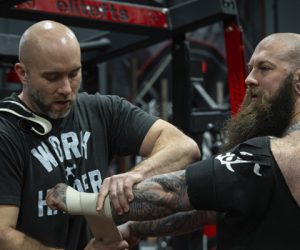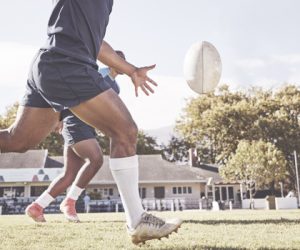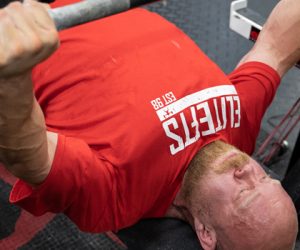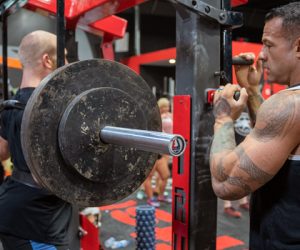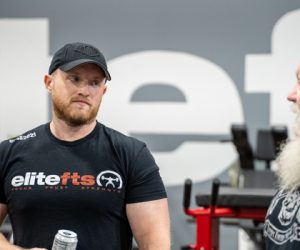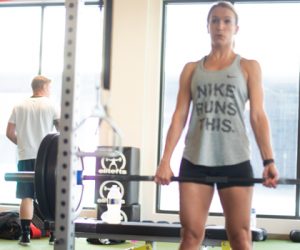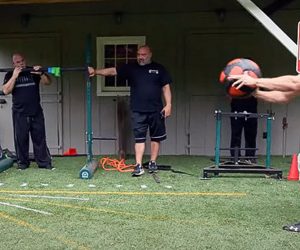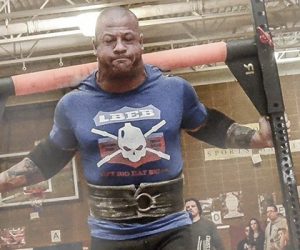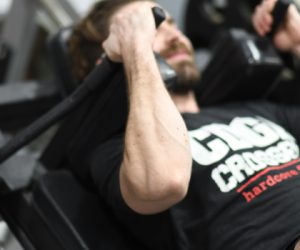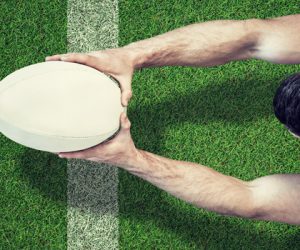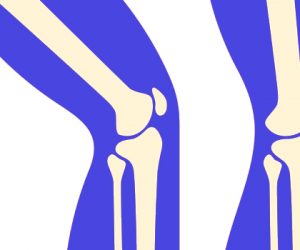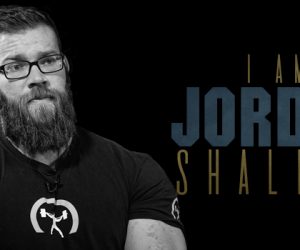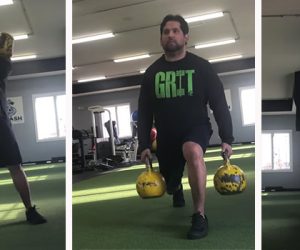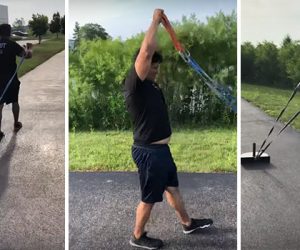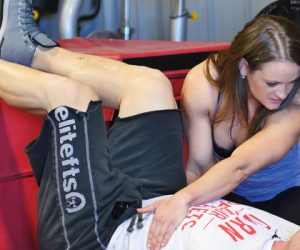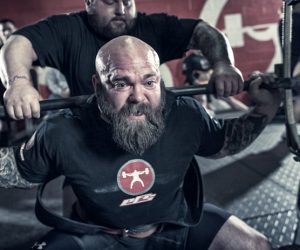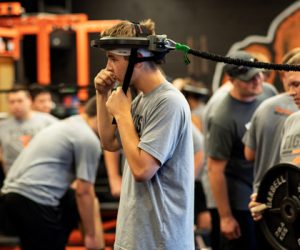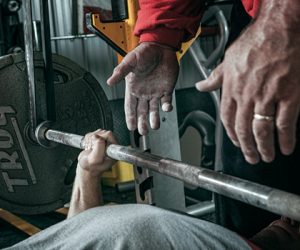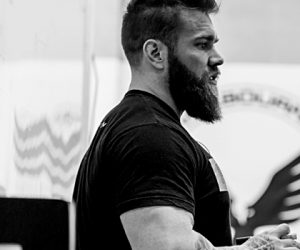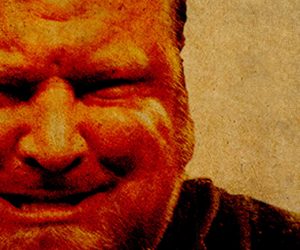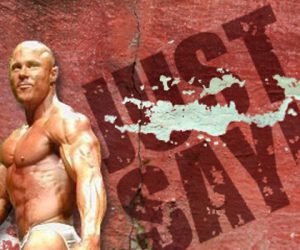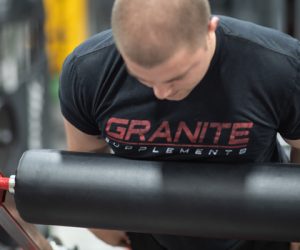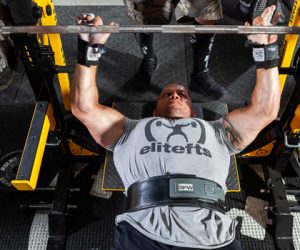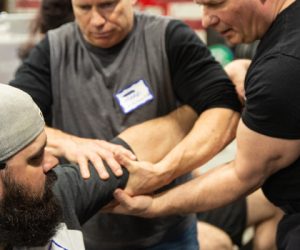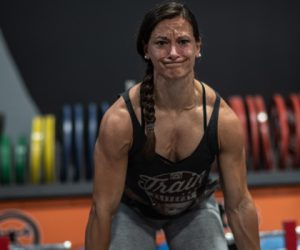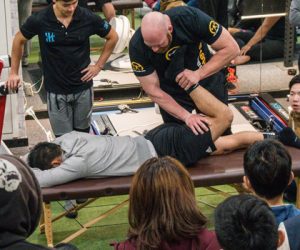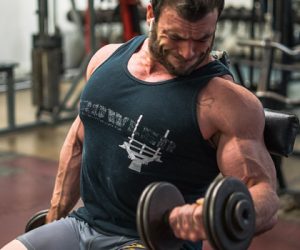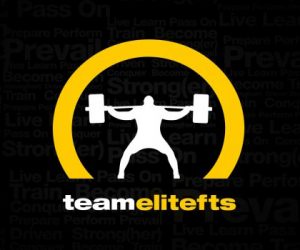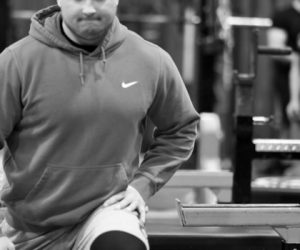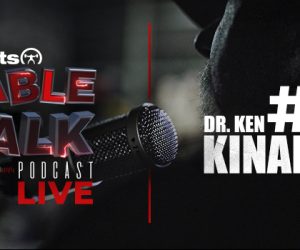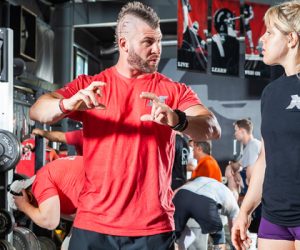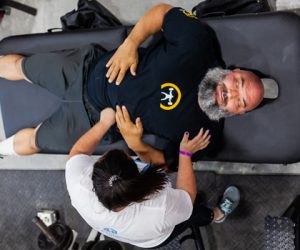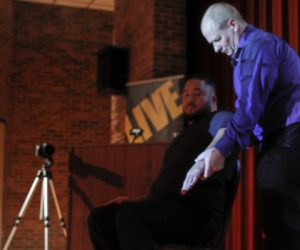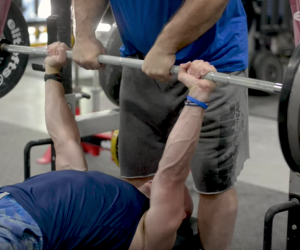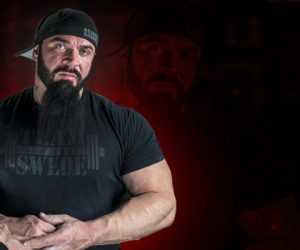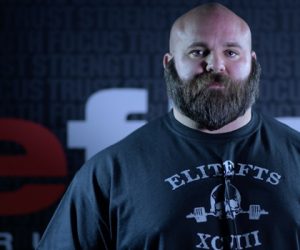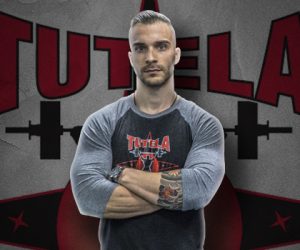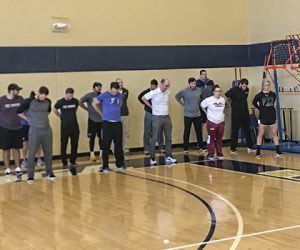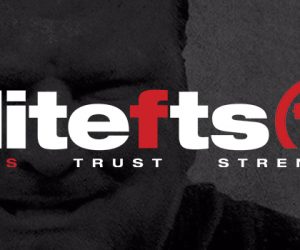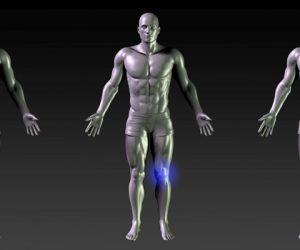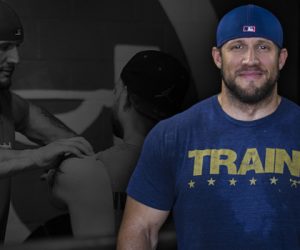What Causes and How Do We Manage Injury Risk?
There is a natural risk when you push your body to its limits in strength training. While load management, sleep, and genetics all weigh in on injury risk, these strategies will help mitigate those risks so you can stay happy lifting.
CARE Programming Versatility
Tailor the CARE Program for your athletes by using entree, main course, and dessert workout scenarios.
Technique's Role in Injury Risk
Can we adapt, get stronger, and build tolerance within what could be considered bad technique. Here’s how injuries occur and don’t.
Try This Warm-Up Before Your Next Lower Body Training Session
We do this warm-up with all our powerlifters and athletes. Prime the system BEFORE you get under the bar to drive performance.
#80 - Mitigating Injury and Peaking for the Meet
Learn how to mitigate injury while under the bar and get the inside scoop on how Sam is peaking for his meet.
A Well-Rounded Approach to Injury Prevention
No exercise or series of exercises can guarantee injury prevention. It takes a holistic approach with a heaping amount of common sense.
The Role of a Strength Coach
Let’s look at some of the jobs a strength coach can and should be responsible for.
5 Exercises to Never Take Out of Your Program
The five exercises I have chosen will not cause overuse injuries as the heavy compound movements can. In fact, if you keep them in weekly, you’ll prevent injuries.
Smoothing It Out
I am going to offer the second-best option that I know of to prevent injury that does not require a coach or countless hours to master. You can do it all by yourself. It is a way of executing a repetition.
Choosing 1 of 10 Programs to Individualize the Training Process
In designing programs for my players, I discuss with the player, the medical staff, and the coaching staff the areas they see as major ones to work on. All 10 programs are based on the emphasis given to each of the three key areas of weight room programming: neural, mechanical, and metabolic.
The Post-Surgical Knee: The Stability and Proprioception Rebuild
The initial stages of the balance, stability, and proprioception phase will be performed through the slow rebuilding of ROM through single-leg movements and will eventually use more advanced dynamic movements, such as jumping and landing mechanics drills.
WATCH: I am Jordan Shallow
“I’m not the strongest guy in the world, but I might have a run as one of the stronger chiropractors.” elitefts coach and columnist Dr. Jordan Shallow wants to make his mark in chiropractic, education, training, and fitness — and he might be doing just that through his travels and writings.
Project Return to Press: The Road Back
You really don’t appreciate something until it’s gone. But man, when you’re able to bench again… there’s nothing like it.
Project Return to Press: No Barbell, No Problem
OK, maybe I shouldn’t have gone so hardcore with jiu-jitsu, but you know what? I made the best of my injury and learned from it.
Programming Through Injury: Good, Better, and Best Options
Programming through injury doesn’t need to be nearly as complicated as we make it. It’s not really all that different than programming a regular training block for a movement with a few differences.
Paying the Price of the Platform
The wear and tear of the sport doesn’t end when the lifter stops competing. The price of the platform may be one that they will pay for throughout the rest of their lives.
Neck Training Guidelines to Reduce Incidences and Severity of Concussions
A strong neck is critical to preventing concussions in athletes participating in contact sports — but what are the best ways to strengthen necks?
Practical Prilepin Plans
It is this article’s intention to impart an easily identifiable progression in accordance with Prilepin’s stipulations and practical examples of it, all of which I’ve used at the Division I level.
The Injury Equation
Whether they know it or not, most therapists and trainers who are following the current injury paradigm are focusing solely on one part of the equation; they are exclusively focused on tissue tolerance, which is essentially a one-dimensional view.
Chad vs. The World: Redefining Dedication
Even the smartest, strongest, and best of us can learn and improve on what we do or how we do it. The journey for strength is all about education and learning, and this is how we continue to get stronger. All of this takes dedication.
Chad vs. The World: Widening My Tunnel Vision
It is tough to look back with a clear open mind to see from a different perspective. It is with a clear open mind that I was able to see I did it wrong — and it’s not just in terms of my powerlifting career, but my life as whole.
Romanian Deadlifts Revisited: How to Appropriately Apply The Hinge
There’s an assumption (known or unknown) that everyone has the proficiency to perform what we see “if we just lower the weight.” That’s quite the caveat with a lot of assumption, especially when it comes to movements like the Romanian Deadlift.
Can I Continue to Build Muscle in My 40s Without Getting Injured?
Oh, lordy, are you over 40? Sure, you might not feel like 40 most of the time (or all of the time), but you need to remember you’re not a 20-something anymore, so you can’t be training like one, either. Back to the question in the title… Yes.
5 Repeated Effort Method Principles to Master
In conjugate, accessory work plays a huge role, even if it isn’t one that gets the attention. Accessory work is going to help fill your gaps and prevent you from developing new ones.
Understanding Groin Injuries: Complex Groin Injuries
When a doctor who knows how I train gave me his diagnosis, I had no idea what to do because I hadn’t met anyone that had this constellation of stuff. Neither had he. The best foundation we came up with was based on the same principles in the previous articles.
Vincent Dizenzo's BAMF Program
A few weeks ago I blogged about how I was mistakenly looking for a one-size-fits-all approach to dealing with my injuries, and my circumstances are different. But with the help of four friends (and my wife), we came up with a BAMF program. Here it is.
How Stuff Works: The Knee Sleeve
Beyond the notorious odor knee sleeves omit when soaked with sweat and stored in your gym bag for days on end, what don’t you know about them? Four parts in this personal equipment series, let’s find out.
Should the Patient Hear the Pop?
When I started adjusting patients, I liked the sound of popping. I was really attached to it. But if you’re just trying to hear that “pop,” you might end up hurting someone for something that might not have been necessary in the first place.
Understanding Groin Injuries: Tendon Injuries
Tendon injuries suck. The healing process for tendon injuries is slower than it is for muscle tears. If you ended up rupturing your tendon, you may require surgery. But there are still some things you can do in terms of rehabbing certain tendon injuries…
Guidelines For Injury-Free Progress: Controlling Intensity
“If I train strength and conditioning at the same time, will both suffer?” Unless you are taxing your recovery or training in completely disparate ways, you can train both domains. Here are a few ways you can do that.
Why Your Bones Need Time to Recover
We’re starting to see more and more bone injuries. We’ve seen it in powerlifting, where all of a sudden, if someone, especially younger lifters — they don’t have enough time to lay down that bone properly — I’ve seen bones actually snap. That’s why recovery is so important.
If I Don't Have a Practitioner, Where Do I Go for Help?
I don’t care if it’s a physical therapist, a chiropractor, or a medical doctor. You need someone who looks at the overall picture, not just the area that’s giving you trouble.
The Ghost in the Machine
Your body is like a race car. Even the best race cars break and wear parts down. When one of those things breaks, it, in turn, puts added pressure on other parts, which are then at risk of breaking. Take your foot off the gas pedal every now again and recover.
A Hypertrophy Method for Strength Athletes
The thing to keep in mind as you read the remainder of this program is that I’m describing a method of training — not a set-in-stone program. It’s up to you to apply the method to your particular context: your body, your goals, and your life situation.
Meet Report: Making a Comeback at APF Nationals After a Painful Injury
Two years ago, I injured myself at a meet. The pain was so bad I nearly pulled out of the meet. After talking with some experts, I decided to hop into the APF Nationals without a weight cut and with a quick prep. Let’s just say it’s good to be back.
Understanding Groin Injuries: A Muscle Tear
The biggest thing you need to take away from muscle tears is that the healing process is largely chemically based and physiologically mediated in order to remedy the mechanical disruption and restore (again) mechanical strength.
Adjusting to Life Post-Hip Replacement
After undergoing a hip replacement surgery and another surgery on my other hip, it goes without saying I’ve had to adjust how I train. But let me just say, I am so glad I went through with these procedures. The pain is worth it, I promise.
Be Part of a Groundbreaking Strength Sports Study
elitefts columnist Marilia Coutinho needs help gathering data for her latest scholastic endeavor: a first-of-its-kind scholarly series about the science of lifting gear benefits. No matter your sport or gear use, take a survey on knee sleeves. Remember to share!
Understanding Groin Injuries: A Primer
I’m not going to lie, I’ve had a number of injuries through my training, but Dave was right: groin injuries are a different beast, and the nature of the beast is going to depend more fully on what actual tissue was affected.
Bang Legs Without Banging Your Lower Back
It took me 26 years to develop lower back issues. But over the last 10 years, I’ve learned ways to work around them since becoming a slob is not an option. If you’re looking for ways to train legs without getting hurt (again), this article is for you.
LISTEN: Table Talk Podcast #9 with Dr. Ken Kinakin
In this episode of Table Talk Podcast, Dave Tate and Dr. Ken Kinakin talk about a variety of lifting-related injuries, working around and preventing said injuries, the Society of Weight-Training Injury Specialists, and more.
Activate and Contract Lower Abdominals for a Healthy Pelvis Position
Do not settle on one fix and rely on it. Instead, rely on multiple exercises and this simple formula: more muscle used = more stability = more strength. Considering your lower abdominals, here are two exercises to try.
Troubleshooting Strength Injuries: Dealing with Injury
For those of you who are currently dealing with a significant injury, this article, the fifth and final part of the Troubleshooting Strength Injuries series, will help serve as a road map to recovery.
Troubleshooting Strength Injuries: How to Autoregulate
Autoregulation is about being able to gather as much information as possible to assess the current situation and knowledge. Once you know that, you can apply this knowledge to autoregulate your training… but you’ll need to learn a couple of skills first.
WATCH: SSTSS Presenter Dr. Kinakin on Weightlifting Injuries in Athletes
With all of his credentials, it’s no wonder Dr. Ken Kinakin has been a speaker at elitefts seminars — and he’ll be taking up the role again for the upcoming 2019 Strong(er) Sports Training and Success Summit. Here are the topics he’ll be presenting on.
The Art of Programming for Injury Prevention/Risk Management
I believe the most important role of a strength and conditioning coach is to create programs that minimize the risk of injury. Armed with knowledge from a study on rugby injuries, I wrote a program that focuses on strengthening injury-prone areas. Here’s what I came up with.
WATCH: How to Properly Do a Bench Press Lift-Off
Ideally, a good lifter should also be a good spotter. Unfortunately, that’s not always the case. Dave Tate will walk you through how to do a bench press lift-off — the proper way. This means you’re not putting your nuts in the lifter’s face and aren’t taking the majority of the lift.
Returning From Injury After a Layoff
Coming back after a layoff can be a chance to address imbalances, but it also presents the opportunity for new imbalances to develop. Common sense suggests that testing strength after a layoff isn’t the best idea. But if you are going to do it, keep these things in mind.
Troubleshooting Strength Injuries: What is Autoregulation?
There’s a sweet spot where stressors are present as motivating and growth factors but not too much to where athletes become chronically sympathetic, causing a cascade of performance-altering events. This spot is called autoregulation.
Laying Out the Groundwork to Prevent Injuries
Why are we not focusing on the mechanics? Why is this not important to more coaches and personal trainers? Why are we not laying the groundwork for these athletes to be successful? Staying healthy is a huge part of being successful and in the world of college athletics, if you are injured, you’re not playing.
Two Crucial Components Your Training is Missing
Most intermediates that have come to me without ever working with a qualified coach before are lacking a few qualities in their technique, especially on big lifts. Lacking these qualities can potentially lead to injury at one point or another. These two qualities are tension and torque.
Troubleshooting Strength Injuries: Warning Signs of Injury
Understanding the warning signs and red flags of injury are paramount to successfully pushing your body to the brink without derailing due to injury. So what signs did our example athlete miss in the previous article?
WATCH: Andrey Malanichev — RPR, Powerlifting Culture, Injury Prevention
This interview gives you the chance to learn more about Andrey, his training techniques/philosophies that led him to great success, including his views on sport history/culture found in the US and Russia.
Samoan Rugby Union Returns to CARE Program
The program I am currently running features the CARE program in a new format that I feel better allows the player to get a workout in without going too deep in the RPE continuum, especially if he or she is coming from a unit or a team session.
Reflexive Performance Reset: An Athlete-Based Model
The practitioner-based model is an overworked, overburdened system that leads to scarcity problems and a largely insufficient amount of time spent serving those in need of the services. RPR overcomes every downfall of this model.
Where Is Your Focus?
To get your strongest in the fastest way possible, you need to focus on training as a whole. Every aspect needs attention and focus.
Bodybuilding for the Powerlifter — Programming Arm Training (with Sample...
No, hammer curls and pushdowns probably aren’t going to add 50 pounds to your bench, but they very well might keep your elbows healthy enough so that you can train consistently. And getting arms big enough to bust through shirtsleeves is fun.
ACL Rehab Phase One — Returning to the Weight Room
After an ACL injury, the athlete is first rehabbed exclusively in the training room. Once they’re released to me, we start this phase of the recovery process.
Current State of the Injury Rehabilitation and Pre-habilitation Field
How do people begin to decipher what constitutes good injury rehabilitation or pre-habilitation? In this article, I’m going to describe in detail many different factors that will help you sniff out the bullshit.









